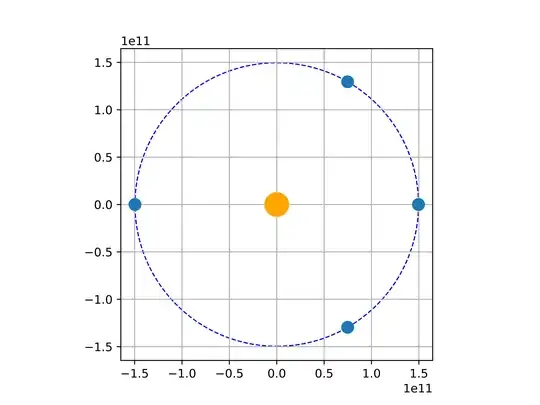I'm using python to calculate the Lagrange points of the Sun-Earth system. I started assuming that - for $L_1$ at least - the sum of the gravitational acceleration towards the Sun and the centripetal acceleration towards the Sun should balance with the gravitational acceleration from the Earth:
$$
\frac{GM_\odot}{r^2} + \omega^2 r - \frac{GM_\oplus}{(R-r)^2} = 0
$$
where $R$ is the Sun-Earth distance (149.6 million km), and $r$ is the distance from the Earth to $L_1$.
Rearranging, I got a quintic equation in $r$, calculated the coefficients and asked numpy.poly1d to find the roots. I got five complex roots, which, when plotted, look like this:
Bingo! I was overjoyed when I saw how easy it was to calculate and plot these points!
...however, when I look at the two points closest to Earth, $L_1$ and $L_2$, they are way too close to Earth: $$ L_1 = 183\,324 \ \mathrm{km} \\ L_2 = 183\,212 \ \mathrm{km} $$ -only one third of the way to the Moon! In reality, these points are more like 1.5 million kilometers from Earth, so these two points are more than a factor of eight off.
What am I missing here? Is my approach too simple, after all?
